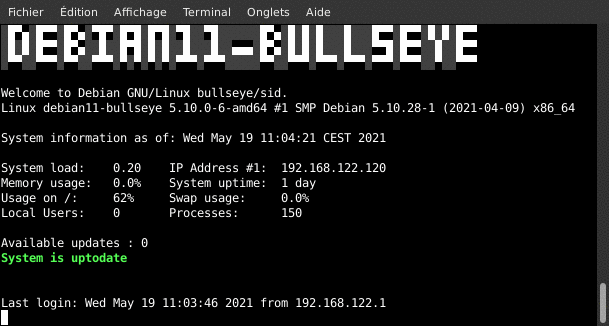Debian11, Preparation, Sudo installation and configuration
How to avoid and forbid direct root connections by locking the root password and to force specified users to gain root access with sudo. The first step is to install sudo and to allow its usage with the named user. Given that all connections will only be allowed by SSH, and only using a key-pair authentication (no password), the user will have no defined password and will need a passwordless access to the root account.
Prerequisites
Create new variables
We need to define the named user who will be allowed to gain root access. We need the username UN and the user password UP. Lets add them to the configuration file :
cat << EOF >> /root/config.env
export UN="`grep 1000 /etc/passwd | cut -d: -f1`" # Named user name
export UP="`grep 1000 /etc/passwd | cut -d: -f1`" # Named user password
EOF
Tune the default values
The variables are initialized with default values. You need to read them, check them, fix them, tune them, with your prefered text editor (vi, isn’t it ?)
vi /root/config.env
Load the variables in the environment
source /root/config.env
Installation
Let’s install sudo.
apt-get install -y sudo
Named user configuration
Allow the named user to run any command, with password. At this stage, the user still has a password-protected account. Password login will be disabled after the SSH configuration.

adduser ${UN} sudo
Allow user to run any command without password (he will have password disabled later)
echo "${UN} ALL=(ALL:ALL) NOPASSWD: ALL" > /etc/sudoers.d/${UN}